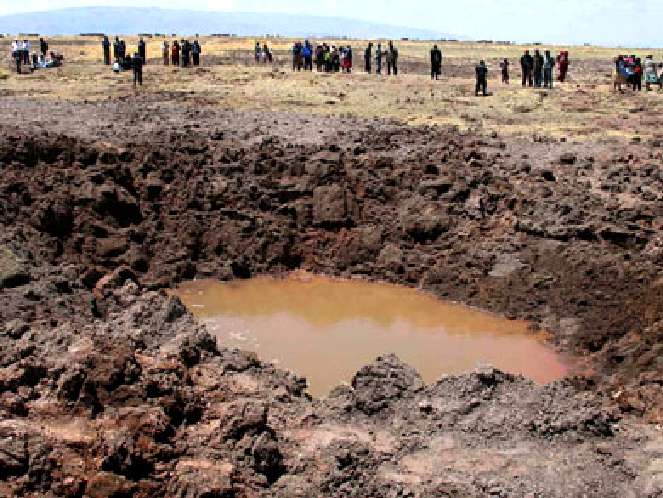
The Carancas meteorite crater

The Carancas meteorite crater
In the figure: Carancas (Peru), 16º39’52” S, 69º02’38” W, elevation 3824 m a.s.l. - The slightly elliptical
crater, around 13.3 m by 13.8 m in size and 5 m deep, created by a meteorite on 15 September 2007 at 11:45 Local time (19:45 UT).
The "soft" impact of a stony meteorite with the water-saturated soil, that had been covered by Lake Titicaca during the ice age,
can explain the main characteristics of the crater: the bottom immediately filled with water, the insignificant, less than one
meter "rim" practically present on the crater's northern side only, the huge chaotic chunks of soil present at less than 200 m
from the impact point.
The impacting body has been classed as a relatively-ordinary H4-5 Chondrite. It was probably around a metre in diameter and struck
at relatively high speed — 6.5 kilometres per second.
Stony meteorites, including the chondrites, tend not to be too robust. they often fragment during their atmospheric flight, giving
a scatter ellipse of material on the ground, and sometimes craters, elongated along their line of approach.
Peter Schultz of Brown University states (Schultz et al., LPSC 39, 2007): "It appears that the standard pancake model may apply to
relatively strong meteoritic bodies (irons) but needs to be modified for weaker objects, such as stony meteorites. Experimental and
theoretical models provide a possible solution: weak or fragmented objects reshape during entry, thereby minimizing aerodynamic drag
and stresses. in this case the Mach cone prevents fragments from escaping the Mach cone, rather than
spreading the fragments apart as in the pancake model".